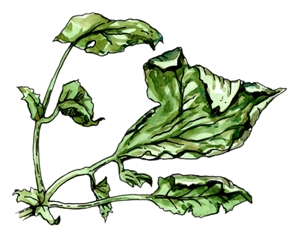It can be very depressing to see a tree dying from a disease. While trees are known to be hardy plants, they can be harmed by diseases due to several factors. It is very important to address immediately any signs that a tree may have been possibly infested by a disease. Of course, the best way to ensure that trees remain free from diseases is take preventive measures and observe proper maintenance and care. It is highly recommended that the services of professional should be availed when ensuring that trees remain free from any form of disease.
Canker Disease
This common tree disease got this name since a bark or a branch of a tree that has been infected with this disease will have blisters much like that of a canker sore. Canker disease may develop in a tree when there is an open wound that may be infected by different kinds of bacteria or fungi. The infection may come in three forms, namely: Cytospora, Nectria, and Phomopsis. Trees mostly affected are the pine, poplar, spruce, maple, oak, juniper, and willow trees.
Heart Rot Disease
Like the canker disease, heart rot disease is also caused by any of the several species of fungi, which may have multiplied in a tree’s open wound or bare wood. Infected mostly by this disease are deciduous trees such as the beech, birch, cedar, dogwood, and maple trees that have not been pruned properly or left with broken branches. Infestation may also be triggered by any damage caused by fire, insects, or animals. A good indication that the tree is infected with heart rot disease is the presence of conk or mushroom bodies growing on the tree.
Powdery Mildew Disease
Also caused by a variety of fungi from the Erysiphale family is the powdery mildew disease. An indication of this tree disease is the presence of white or gray powdery growth that may look like talcum powder on the leaves of the tree. While mildew may attack almost all types of trees, mostly affected by the powdery mildew disease are the catalpa, chokeberry, crabapple, and linden trees.
Root and Butt Rot Disease
A root and butt rot disease is caused by a black, leathery fungus such as the Serpula himantiodes fungus that infests the trunk of a tree from the ground, usually hardwood trees. Three types of this disease are the Armillaria, black root rot, and the Hypoxylon deustum. Armillaria is known to attack the roots and butts of weakened conifer and broad-leaved trees, Hypoxylon deustrum attacks the roots and butts of hardwood trees that have mechanical wounds, and black root rot damages the roots of these hardwood trees. These diseases may be indicated by the growth of mushrooms in the soil near the base of the tree.
Sooty Mold Disease
Known to be very common in trees that have a large population of insects, the sooty mold disease is caused by molds of the antennariella, aureobasidium, capnodium, cladosporium, limacinula, and scorias varieties. These fungi attack feeding insects and are found on the leaves and nearby soil with a black, powdery appearance. Usually affected are trees such as the boxelder, elm, linden, and maples.

